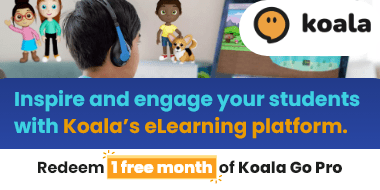The good news about formulating a strong lesson plan for a Content and Language Integrated Learning (CLIL) class is that it will contain many of the same features of a good lesson plan for any class. That is, it will include transitions from and to the previous class and the next one, it will warm students up to the day’s lesson in an engaging way, it will present new material and recycle familiar material, it will include some ways to assess progress during the class, and it will be flexible enough to account for classes that move slower or more quickly than you had anticipated.
What’s important about CLIL lesson plans, though, is that you include both subject area content and language points so that you derive the full benefits of a CLIL approach. If you try to wing it, you might wind up concentrating on one area to the detriment of the other. Over time, you’ll develop your own CLIL lesson plan template, but if you need some inspiration, check out the CLIL lesson plan examples below!
What are the key elements of CLIL lesson plans?
Content
Most teachers find it easiest to start by considering the content. What knowledge – that is, what subject area material – do you want to transmit? How are you going to present it – through an article, a video, a demonstration, a discussion, or an experiment?
It can be helpful when planning to finish sentences such as I want my students to be able to/At the end of the class, they should know… If you have a cooperating content area teacher at your institution, meet with that person in advance to go over your goals and see how they interact with theirs.
Language
Once you have the content pinned down, you can pick out the necessary language and communication skills that students will need to engage with the material. For example, these could include:
- Specialized vocabulary
- Functional phrases and collocations
- Pronunciation or intonation practice
- Grammatical structures
- Features of text organization
You’ll find these linguistic features in the texts that you present, but also in the language that students need to complete tasks. Imagine yourself as a student carrying out a task. What will you say? What will you write? Then, determine if you’ll need to teach any of this language to your class before presenting students with the task.
For example, imagine that you want students to be able to explain how a lever works. You plan to provide a demonstration or a video of a lever being used, and you will ask students to write a few paragraphs about what they see. For vocabulary, they might need to know words like machine, beam, lever, fulcrum or pivot point, effort, resistance, mass, distance, and so on. For grammar, they might need simple conditionals and cause/effect statements, and, of course, expressions of measurement: If you double the distance on one side of the lever, it takes half as much mass to balance./When you double the distance on one side of the lever, you need half as much mass to balance.
As you determine the content and the language, make sure you have a reasonable balance of both – enough content to keep learners engaged and enough language for them to engage with the content.
If you are cooperating with a content teacher, make sure you also share the language that you are teaching. The cooperating teacher will then know what they should expect learners to be able to communicate in their class. They might have ideas for useful language that you did not think of!
Take a look at the following infographic, from the Bridge Specialized Certification in CLIL course, to see a summary of the advantages of using a bilingual education method like CLIL:
What are some tips for CLIL lesson planning?
- Connect what CLIL activities students are doing today with what they have done before. Remember, our earlier experiment with putting sugar in the flowers’ water? Well, today we’re going to add salt and see what happens.
- Connect your class to other classes. I know in your art history class you just saw a film about the Egyptian pyramids. Today, we will make and label posters that show what’s inside a pyramid.
- Have some extra content information in reserve. You are the language teacher and are not expected to be a content area specialist. However, you will earn your students’ respect if you occasionally demonstrate content knowledge beyond the exact classroom task. Do a little research online, and perhaps learn an interesting fact or two about a famous explorer, a story about a scientific discovery, or a current example of social science theory. You might not find the right situations to bring up this information in every class, but you’ll be ready if the opportunity arises.
- Be able to explain the importance of the target content. It’s natural for students to wonder why they are being asked to learn certain information. However, they may hesitate to ask a content teacher a question like Why are we studying ancient Greek architecture? Who cares what the Parthenon looked like originally? Since you are the language teacher, students may feel safer (and more polite) directing those kinds of questions to you. Be ready with an answer! What does the content in your CLIL curriculum have to do with real life? Before your class, ask yourself Why is this important? Why is this interesting? Make sure you have good answers. If you don’t have answers, ask a content area specialist or do a short online query to prepare yourself.
Learn more about the CLIL methodology as well as other ELT techniques, technologies, and trends with Bridge Expert Series webinars. Register to watch live, or join our community to access 75+ on-demand webinars and earn Certificates of Professional Development.
CLIL lesson plans for kids
Lesson: Density
Target content: Understanding what density means and how it can be demonstrated
Target language: Sequencing words (first, next, then); vocabulary (nouns: oil, water, food coloring; verbs: put, add, sink, float, rise, fall; adjectives: heavy, light, dense); grammar (comparatives: heavier/lighter/denser than)
Exposition: Demonstration of density through an experiment. Students will predict, observe, and report.
Procedure:
- Show students a tank of water and several objects, such as a stone, a feather, a scrap of paper, a coin, a piece of Styrofoam, oil, food coloring, etc.
- Ask students if objects will float or sink in the water and why (to elicit It is heavy/light, It is heavier/lighter than water).
- Define density (density = mass/volume). Ask students which objects they think are the densest and the least dense.
- Ask students which objects they think are denser than water and which are less dense than water. Encourage them to use the correct comparatives: I think oil is less dense than water. I think a stone is denser than water. To reinforce the language, have them speak in pairs and then write their guesses down. Ask them how they can test their theories.
- Drop the different objects and substances in the water and have students describe what they see. The oil is sinking to the bottom! Oil is denser than water.
- Have students write a paragraph about which substances are denser and which are less dense than water. They can use sequencing words to describe the experiment. First, Ms. Kim put a stone in the water. The stone sank to the bottom. This means that the stone is denser than water. Next, she…
Follow-up/application
Ask students, “Why is understanding density important?” If students are stuck or lacking ideas, ask, “How do we know if a boat will float or sink?”
Lesson: Reading Maps
Target content: Being able to read and interpret a basic map using directional words
Target language: Directional words (above, below, left, right); vocabulary (nouns: compass, north, south, east, west; verbs: walk, drive, cross, wait; adjectives: small, large, busy, slow); grammar (comparatives: larger/smaller, higher/lower)
Exposition: Students will be able to read and interpret maps through a simple town map.
Procedure:
- Show students a simple map of a town with landmarks and streets that includes a compass.
- Ask students if they can point out which direction on the map is north, south, east, and west.
- Show flashcards with each directional word and have students repeat after you.
- Give each student a copy of the map, and then as a class, show students how to use directional words to find directions (e.g., Go north on Main Street to find the library) and trace the path on the map.
- Have students pair up and give them a list of directions to follow on their maps (e.g., Start at the school, go south to the museum, then go west to the zoo, etc.).
- Have students take turns following directions on the maps.
Follow-up/application
Ask students, “How can reading maps and using directional words help you in real-life situations? Can you share an example?
CLIL lesson plans for teens or adults
Lesson: The Sun
Target content: The nature and composition of the sun
Target language: Names of elements (i.e., aluminum, carbon, copper, helium, hydrogen, iron, etc; include elements related to the sun and some distractors); vocabulary related to energy (atomic, electricity, energy, fusion, gas, heat, light, nuclear, sunlight, temperature)
Exposition: Explanation of the composition of the sun and how it shines through a song. Presentation and discussion of how and why scientific theories change over time with new information. Students will predict, learn, and practice content vocabulary, listen and check, discuss, and assess one another.
Procedure:
- Show students a photo of the sun. Ask, “What is this? What is it made of? What does it produce?” Accept all answers, even in students’ native language (L1).
- Present the target vocabulary on index cards spread on a table. You could define, classify, discuss, etc.
- From YouTube, play the song, “Why Does the Sun Shine?” (Tom Glazer). Divide students into two teams, one on each side of the table. As students listen, they grab the appropriate index card when they hear the word.
- At the end of the song, the teams exchange the words they grabbed. Have students take turns reading the words aloud, and go over any pronunciation or questions about meaning.
- Play the song again, and have students return each card to the table when they hear the word sung. This reinforces listening comprehension and recognition. (Note that the same song has been covered by the group They Might Be Giants, so on the second listening, you could use a new version of the song.)
- Pass out a sheet of gapped song lyrics – you could gap certain STEM words, rhyming words, or linguistically significant words (such as past participles or auxiliaries), or even create two different worksheets and put students in pairs to listen for different language and then compare with one another to check answers.
- For extra credit, let students (alone or in pairs) memorize and perform the song.
- Tell students, “This song was believed to be correct when it was recorded in the late 1950s. However, it contains one piece of information we now know to be incorrect. What do you think it is?” Let students guess and discuss.
- Explain the meaning of “retraction.” Then, say that the band They Might Be Giants, who recorded a cover of the “Why Does the Sun Shine?” song, later recorded a retraction song when they learned about a scientific update.
- Play the song “Why Does the Sun Really Shine? (The Sun is a Miasma of Incandescent Plasma)”, and let students follow the lyrics on a printed sheet.
Follow-up/application
- Conclude with a discussion of why and how scientific information gets updated and why retractions are important. Offer some useful sentence frames, such as, “People used to think X, but now we know Y.”
- Have students work in groups to write quiz questions based on factual information about the sun. Circulate to help with language as necessary. Groups can exchange quiz questions in a subsequent class, or you can collect them, collate the questions, and distribute one quiz to the whole class in a future session.
Lesson: Types of Governments
Target content: Recognize different types of world governments
Target language: Vocabulary (nouns: democracy, monarchy, dictatorship, citizen; verbs: govern, elect, rule; adjectives: democratic, elected)
Exposition: Students will be able to identify and describe different forms of government and understand their characteristics.
Procedure:
- Show students images of government buildings and activities (e.g., voting stations, parliamentary sessions, congressional sessions, etc.). Ask students why they think governments are important.
- Show images of different types of governments and ask students what they know about them.
- Name and explain the different types of governments, providing some characteristics of each.
- Divide the class into small groups and assign each group one type of government.
- Pass out poster materials (poster paper, markers, magazines for images, etc.).
- Have each group create a poster that includes:
- The definition of their government.
- Its key characteristics and features.
- Examples of countries that have this type of government.
- Visual representations (images, symbols, drawings, etc.).
Follow-up/application
Have each group present their poster to the class. You may also encourage a Q&A session in which students can ask questions for the presenters to answer.
The big picture
Remember that the most important parts of a content and language lesson dovetail. They address the questions, “Why is this information important?” and “How can I talk about it?” Effective CLIL lesson plans focus on fostering learners’ curiosity and interest while giving them the tools to share, question, and apply information to their lives.






